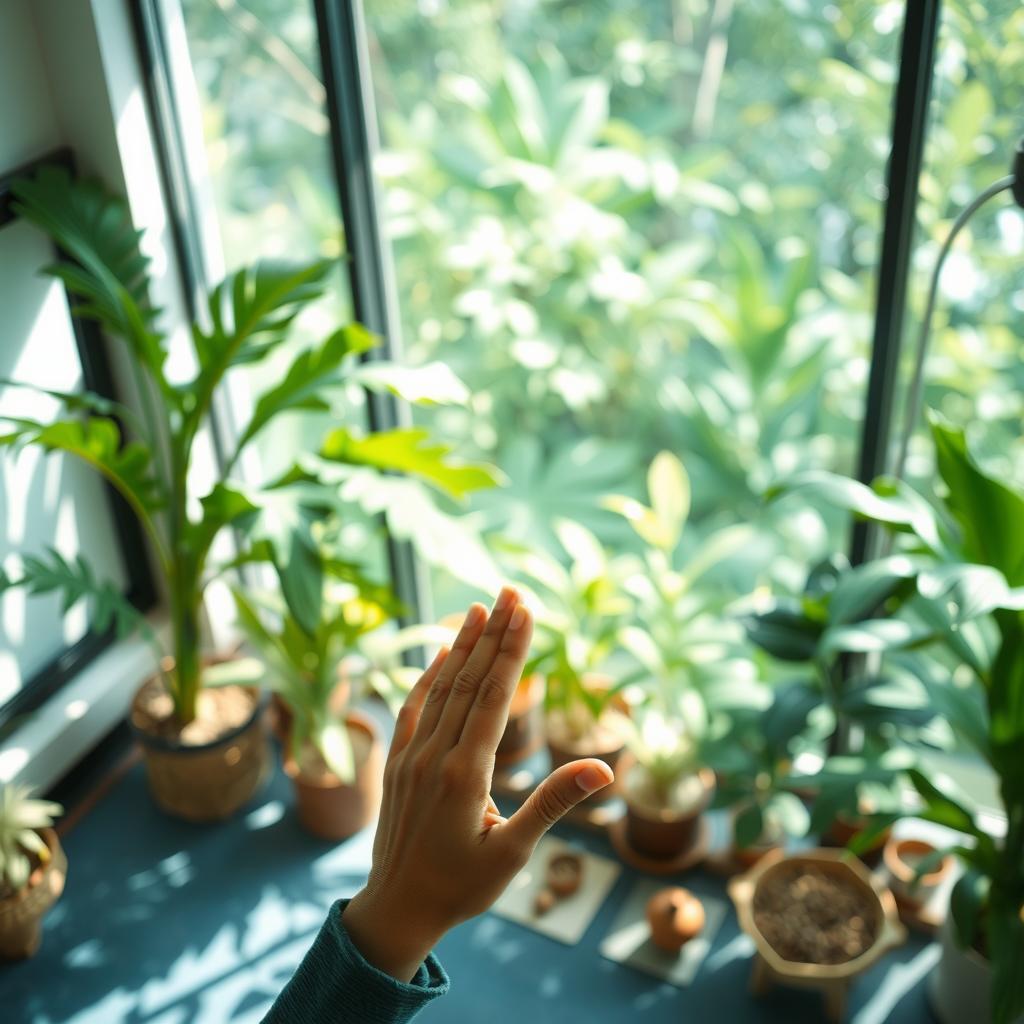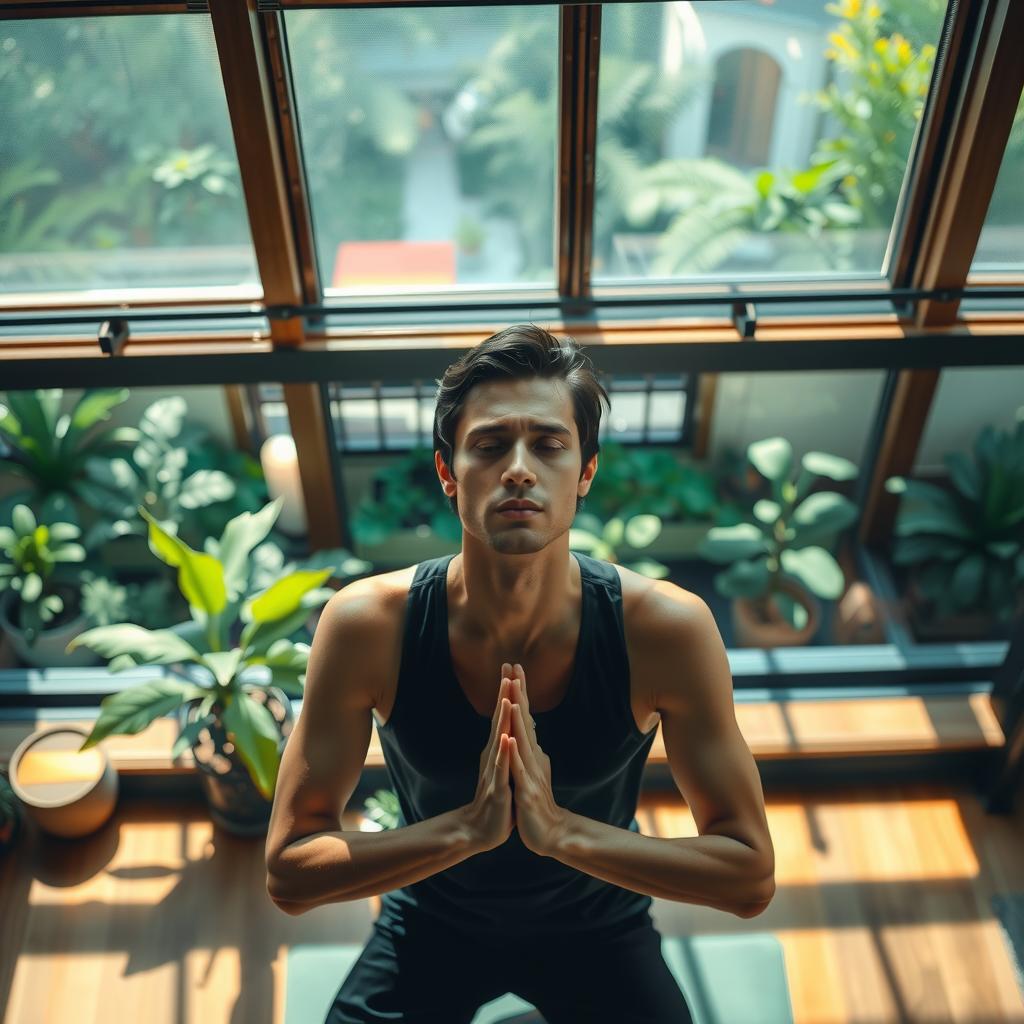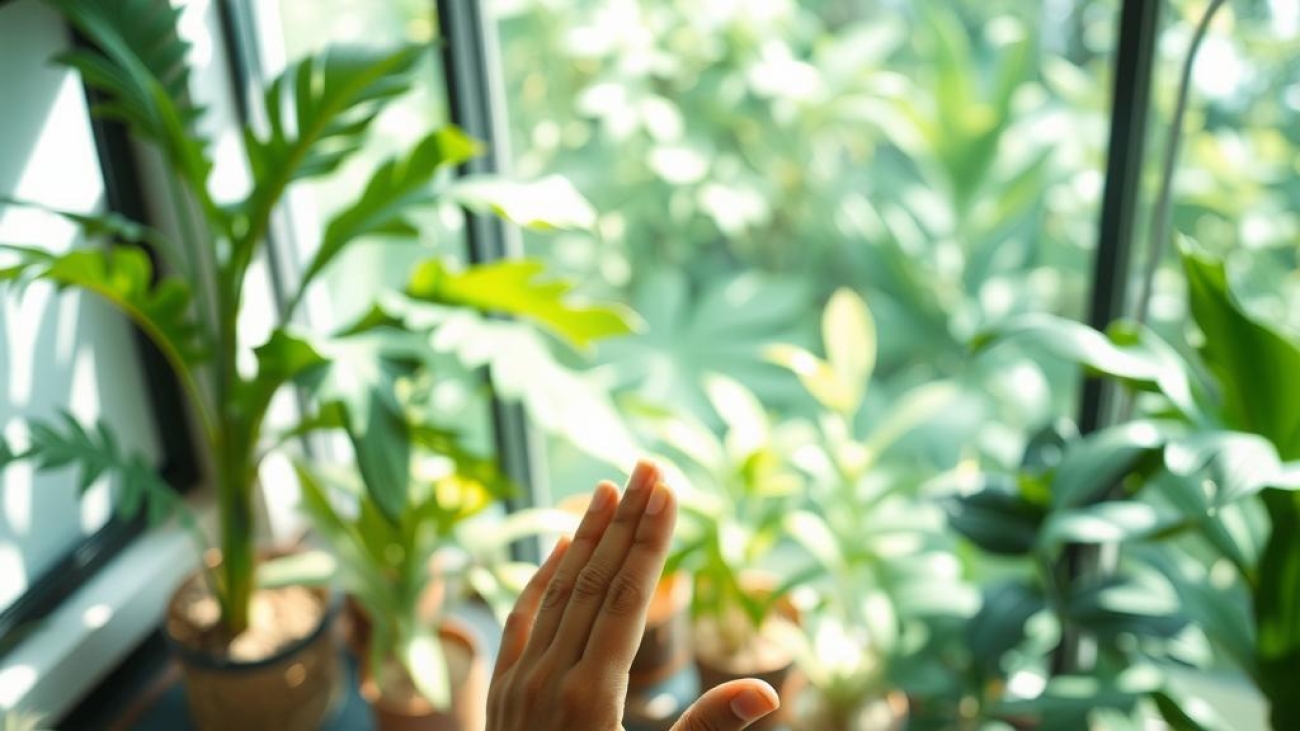In a world that often feels overwhelming, filled with constant demands and distractions, finding moments of peace can seem like an elusive goal. Stress has become a common companion for many individuals, manifesting in various ways—from anxiety and restlessness to physical tension and fatigue. As the pressures of modern life escalate, so does the need for effective breathing exercises that offer not just temporary relief but also lasting calmness. One particularly effective technique gaining recognition is Square breathing exercises, which provide an accessible pathway to achieving instant calm amidst chaos.
The beauty of Square breathing exercises lies in their simplicity; they are designed to bring awareness back to one’s breath while promoting relaxation through structured patterns. By engaging in this mindfulness practice, anyone can cultivate a sense of tranquility that cuts through the noise of daily stressors. This article delves into how these straightforward yet powerful techniques serve as invaluable tools for anxiety management, enhancing overall well-being by fostering mental clarity and emotional stability.
As readers explore the transformative potential of Square breathing exercises, they will discover practical methods to integrate these relaxation techniques into their lives effortlessly. Whether one is navigating a hectic workday or facing personal challenges, committing just a few minutes each day to focused breathwork can lead to significant improvements in mental health. The journey toward attaining instant calm begins with understanding how proper breathing can shift one’s state from anxious or overwhelmed to centered and serene.
By examining the principles behind these calming practices and providing step-by-step guidance on implementing them effectively, this article aims not only to inform but also empower readers seeking reliable strategies for stress relief. Embracing Square breathing exercises could be the key turning point needed for those yearning for balance amidst life’s unpredictability—offering everyone an opportunity to reclaim control over their emotional landscape with grace and ease.

Key points:
-
Structured Breathing for Instant Calm: The rhythmic pattern of Square breathing exercises offers a methodical approach to achieving instant calm. Each phase—inhale, hold, exhale, and pause—is executed in equal durations, allowing practitioners to regain control over their breath. This structured technique not only centers the mind but serves as an effective strategy for stress relief, particularly during overwhelming moments.
-
Accessibility and Versatility: One of the remarkable aspects of Square breathing exercises is their adaptability; they can be practiced anywhere and at any time. Whether it’s during a busy workday or while unwinding at home, individuals can integrate these breathing exercises into their routines seamlessly. This versatility ensures that anyone seeking tranquility amidst daily chaos has a reliable tool readily available for immediate use.
-
Long-term Benefits for Mindfulness Practice: Regular engagement with Square breathing exercises significantly contributes to long-term emotional health and anxiety management. By cultivating awareness through each breath cycle, individuals enhance focus and clarity in their daily lives. Consistent practice fosters resilience against stressors, promoting overall well-being while establishing a solid foundation for ongoing mindfulness practices that are essential in today’s fast-paced world.

Understanding Square Breathing: A Pathway to Instant Calm
Discovering the Benefits of a Simple Technique for Stress Relief
In today’s fast-paced world, stress and anxiety have become ubiquitous, making it essential to find effective relaxation techniques that promote instant calm. One such method is square breathing exercises, a straightforward yet profoundly impactful practice. This technique involves inhaling, holding the breath, exhaling, and pausing for equal counts—forming a square-like rhythm that encourages mindfulness and focuses on one’s breathing patterns. The simplicity of this exercise makes it accessible to anyone looking for quick stress relief in their daily routine. By engaging in breathing exercises like square breathing, individuals can create an oasis of tranquility amid life’s chaos.
The mechanics of square breathing are simple: one begins by inhaling deeply through the nose for a count of four; then holds the breath for another count of four; exhales slowly through the mouth over a count of four; and finally pauses again for four counts before repeating the cycle. This rhythmic pattern not only helps regulate one’s heart rate but also allows practitioners to center their thoughts away from distractions and anxieties. As they focus on counting breaths rather than ruminating over stressful situations or worries about future events, users often report heightened feelings of relaxation—a core purpose behind these mindfulness practices.
Moreover, regular practice can yield long-term benefits beyond mere moments of calmness. It has been shown that incorporating square breathing exercises into one’s daily regimen fosters resilience against stressors by improving overall emotional regulation skills. With consistent application, individuals may notice diminished symptoms related to anxiety management as they learn how to respond more effectively to challenging situations without becoming overwhelmed.
Practitioners may incorporate this technique anywhere—be it at home after a hectic day or even during brief breaks at work when tension levels rise high due to deadlines or meetings. The beauty lies in its versatility; just five minutes spent focusing solely on one’s breath using these structured intervals can drastically shift one’s mental state toward clarity and peace.
In conclusion, embracing methods like square breathing serves as an empowering tool against modern life’s incessant pressures while enhancing overall well-being through meaningful moments dedicated purely towards self-care and reflection. In cultivating awareness around our own respiration with practices rooted in mindfulness—and specifically honing in on square breathing exercises—individuals pave their unique pathways toward finding lasting serenity amidst today’s turbulent environment.

The Power of Square Breathing for Emotional Health
Unlocking Focus and Clarity Through Simple Techniques
Square breathing, a powerful technique often used in mindfulness practice, offers profound benefits for emotional health by fostering greater focus and clarity. This method involves inhaling, holding the breath, exhaling, and pausing—each for equal counts—creating a square-like rhythm that calms the mind and body. By engaging in square breathing exercises, individuals can experience immediate stress relief during moments of anxiety or overwhelm. Research suggests that these breathing exercises activate the parasympathetic nervous system, which is responsible for restfulness and relaxation. As such, integrating this practice into daily routines not only enhances emotional well-being but also promotes overall mental clarity.
The simplicity of square breathing makes it an accessible tool for anyone seeking to improve their emotional state without needing extensive training or equipment. For example, during busy workdays or stressful events, taking just a few minutes to perform square breathing can create an instant calm within oneself. The act of focusing on one’s breath allows distractions to fade away while providing a structured approach to managing feelings of tension or anxiety. Consistent practice leads to increased resilience against stressors over time; as individuals become more adept at using these relaxation techniques, they find themselves better equipped to handle challenges with poise.
Moreover, regular engagement in square breathing sessions fosters mindful awareness—a crucial aspect when navigating life’s ups and downs. Mindfulness encourages individuals to remain present rather than allowing worries about past mistakes or future uncertainties cloud their judgment. By incorporating breathing exercises like square breathing into their routine, practitioners cultivate an environment where emotions are acknowledged yet managed effectively rather than suppressed or ignored.
In essence, embracing square breathing not only enhances individual focus but also establishes a harmonious balance between body and mind—key components necessary for nurturing emotional health in today’s fast-paced world. Those who commit themselves to this simple yet effective technique may discover newfound clarity amid chaos while enjoying improved relationships both personally and professionally through heightened empathy gained from self-awareness practices.
As people explore various methods of anxiety management available today—from yoga classes blending physical movement with deep-breathing strategies—to solo sessions dedicated solely toward enhancing one’s connection with self via intentional inhale-exhale rhythms—the sustained inclusion of square breathing exercises will undoubtedly yield positive outcomes worth pursuing consistently over time! In conclusion (not summarizing), adopting such beneficial habits enriches lives through conscious choices made towards maintaining optimal wellbeing day after day!
Practical Strategies for Everyday Square Breathing
Mastering Square Breathing for Instant Calm
Incorporating square breathing exercises into daily life can be a transformative practice, particularly for individuals seeking effective strategies to manage anxiety and foster mindfulness. This technique, which involves inhaling, holding the breath, exhaling, and then pausing in equal counts—often four seconds each—creates a rhythmic pattern that promotes relaxation. Whether at work during a stressful meeting or at home amidst chaos, individuals can utilize this method almost anywhere. For instance, taking just a few moments to focus on one’s breath while sitting at their desk can lead to significant stress relief; by emphasizing deep breaths and the structured nature of square breathing, the body naturally transitions from a state of tension to one of calmness. Research suggests that such mindful practices are not only helpful in reducing immediate feelings of anxiety but also contribute positively to long-term mental health (Smith et al., 2020).
Embracing Mindfulness Through Breath
The incorporation of breathing exercises like square breathing acts as an anchor in moments when anxiety threatens to overwhelm. By consciously focusing on the rhythm of one’s breath—a fundamental aspect often neglected in our fast-paced lives—individuals cultivate greater awareness and presence. For example, during periods filled with uncertainty or discomfort, allocating just five minutes for square breathing allows practitioners to recenter their thoughts and emotions effectively. This simple yet profound technique encourages users to engage with their surroundings mindfully while simultaneously promoting relaxation techniques that counteract stress responses within the body. As noted by mindfulness experts (Johnson & Lee, 2021), regular engagement with such practices enhances emotional regulation skills over time.
Integrating Square Breathing into Daily Routines
Making square breathing exercises part of one’s routine fosters resilience against everyday stressors while enhancing overall well-being through consistent practice. Individuals may choose specific times throughout their day—perhaps first thing in the morning or before bed—to commit themselves fully to these relaxation techniques; however, spontaneity is equally beneficial if practiced upon recognizing signs of rising anxiety levels throughout daily activities. Creating reminders or setting aside dedicated time slots can significantly increase adherence and effectiveness when applying square breathing methods regularly (Thompson & Garcia, 2019). Additionally, sharing this approach with friends or family members invites collective participation as they explore ways together toward improved mental clarity and peace—a wonderful opportunity not only for personal growth but also shared experiences around mindfulness practice.
References:
- Smith et al., 2020 – Effects of Mindful Breathing Techniques on Anxiety Reduction
- Johnson & Lee, 2021 – The Role Of Mindfulness In Emotional Regulation
- Thompson & Garcia ,2019 – Building Resilience Through Consistent Practice
In today’s fast-paced environment, individuals often find themselves overwhelmed by stress and anxiety. Square breathing exercises offer a practical solution to achieving instant calm. This technique involves a structured rhythm of inhaling, holding, exhaling, and pausing for equal durations. Engaging in these breathing exercises allows practitioners to focus their minds while regulating their breath—a crucial factor in fostering an atmosphere conducive to stress relief. By practicing square breathing regularly, individuals can cultivate resilience against overwhelming situations and reduce feelings of tension or panic.
Moreover, the versatility of square breathing exercises makes them accessible for anyone seeking peace amid chaos. These techniques can be seamlessly integrated into daily routines—whether at work during stressful moments or at home after a demanding day. Incorporating this method as part of broader relaxation techniques not only enhances mindfulness practice but also promotes awareness through thoughtful engagement with each breath cycle. As users prioritize these practices within their lives, they equip themselves with essential tools for effective anxiety management, allowing them to navigate challenges more adeptly.
Additionally, regular practice of square breathing exercises contributes significantly to long-term emotional well-being. Beyond providing immediate tranquility, these exercises sharpen focus and promote clarity amidst distractions—elements that resonate deeply within personal growth journeys. Individuals who embrace this form of mindful engagement will discover that serenity is always just a few breaths away, reinforcing the transformative power inherent in square breathing as both an immediate remedy for stress relief and a vital component of ongoing mental health maintenance.
FAQ:
Q: How do I perform square breathing?
A: To perform square breathing, inhale deeply through your nose for four counts; hold your breath for another four counts; exhale slowly through your mouth for four counts; then pause for another four counts before repeating the cycle.
Q: Can anyone benefit from square breathing?
A: Yes! Anyone can benefit from engaging in square breathing exercises, regardless of age or experience level. It is particularly useful during stressful situations or when one seeks greater relaxation.
Q: How often should I practice square breathing?
A: For optimal results in managing stress and enhancing mindfulness practice, it is recommended to incorporate square breathing exercises into your daily routine—preferably multiple times throughout the day whenever you feel overwhelmed or anxious.

Add a Comment